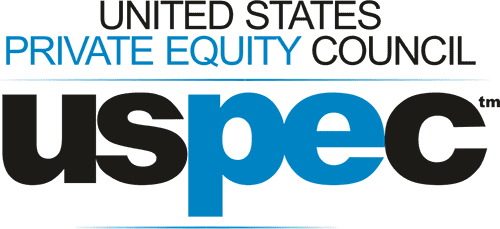Introduction
A deep technology company does not happen overnight. It takes years of research, experimentation, and radical problem-solving to build one. Deep tech requires patient capital and expertise, unlike traditional startups, which scale fast on software. This is where deep tech venture capital is so important, and it is the linkage between radical science and the reality of the market. Investors can turn high-risk, high-reward innovation into long-term industries by supporting founders working on problems in areas such as quantum computing, synthetic biology, or robotics.
Global Trends in Deep Tech Investment
Over the last few years, deep tech investment has stopped being a niche of interest among venture capitalists and has become a key pillar in their portfolios. Reports by BCG in their book, an investor guide to deep tech, claim that deep tech to date takes an estimated 20 percent of all venture capital funding, compared to an estimated 10 percent a decade ago.
This shift is an indication that more investors will be adopting the risk-taking, high-return profile of science-based start-ups.
Geographic trends and funding flows
-
America is still the most dominant in investment. During one recent round, U.S. deep tech companies raised around USD 52 billion in 2024, in contrast to around USD 14 billion in Europe and USD 13 billion in Asia.
-
Europe has also grown its share of tech investments that are deep tech. As of 2023, all of European tech financing is almost 44 percent deep tech, an 18-percentage-point upswing since 2019.
-
Momentum is also observed in local ecosystems. An example is that in Switzerland, deep tech investments amounted to USD 1.9 billion last year and are expected to reach a high of USD 2.3 billion in 2025.
Scale, volatility, and sector momentum
-
The deep tech market is growing at an incredible pace. IndustryARC estimates the deep tech market to be worth USD 714.6 billion in 2031 with an annual compound growth of 48.2 percent.
-
Deep tech investing is a more volatile investment than general tech investing despite the promise. Broad venture capital funding has had high ups and downs- global VC funding was at around USD 357 billion in 2022 and dropped to USD 214 billion in 2023.
-
Under deep tech, there are subsectors like quantum computing, advanced materials, robotics, biotech, and energy tech, which are major sources of capital investment and are attracting specialized funds capable of evaluating the complexity of science.
What Sets Deep Tech Venture Capital Apart
Deep tech investing is fundamentally different from traditional venture capital in a number of ways. Unlike software or consumer technology, deep tech investments tend to have longer development timelines, significant capital expenditures, and a higher degree of scientific or engineering innovation. This means investors need to be patient and technically savvy to evaluate the feasibility of a breakthrough, even if there is a market.

Key distinctions include:
-
Higher capital intensity, less duplication
Because the infrastructure investment (i.e., labs, hardware, prototyping) is costly, every dollar invested is more "deep" than that of a shallow feature or marketing spend. As Packy McCormick discusses, hard tech companies can avoid dilution through learning structured finance.
-
Scientific risk outweighs market risk.
In many areas of deep tech, the question isn't whether or not customers will pay but whether or not the science or engineering will work. This changes the focus of investors on technical due diligence, prototyping milestones, and breakthrough validation instead of just market traction.
-
Closer link with public funding and institutions
Deep tech tends to overlap with national priorities (e.g., energy, defense, biotech). Government initiatives, research labs, and regulatory regimes can be a decisive factor in success.
-
Dual-use and long planning horizons
Some technologies have both civil and defense applications, making the investor's strategy more complex. In our 2025 growth areas survey, Deep Tech & Robotics was mentioned as a leading growth area (6.7% of votes), ahead of AI & Machine Learning.
Profiles of Leading Deep Tech Investors
In deep tech venture capital, there are always a few companies that always get to the top due to their ability to combine technical rigor with strategic vision. These investors have a tendency to focus on high-barrier areas, and their success stories provide an understanding of how ambitions scale.
DCVC (Data Collective Venture Capital ) is one of them. It has invested over the years 469 times and had 135 exits, which highlights its history of financing technology startups in the frontiers. DCVC, in its Deep Tech Opportunities Report, 2024, identifies such investments as Fervo Energy, which, in its approach to geothermal, has modified its drilling methods to reach geothermal resources, a combination of engineering and energy transition. The strategy of DCVC tends to integrate domain depth and operations support.
Sean O’Sullivan Ventures (SOSV) is another significant competitor since it positions itself as one of the most active deep tech investors in the world. Its initiatives, such as HAX and IndieBio, are aimed at the creation of startups and lab-to-market, especially in biotech, materials, and hardware.
Some distinguishing features of leading firms:
-
Sector focus & specialization: These investors tend to focus on specific sectors such as climate tech, advanced materials, biotech, robotics, or quantum.
-
Portfolio support model: In addition to capital, they provide practical resources - technical mentoring, lab access, regulatory guidance, etc.
-
Risk tolerance & patience: They are willing to take more time and more technical risk in exchange for systemic innovation.
Capital Strategies Driving Deep Tech Success
In the world of deep tech venture capital, there isn't a one-size-fits-all strategy to success. Strategies need to adapt to the long timelines, severe technical risk, and bridging lab innovation to market-scale products. Here are some ways that top investors embrace that complexity.
-
Early-Stage Incubation and Late-Stage Scaling
At the incubation phase, capital is invested in proving core technological feasibility, developing prototypes, and hiring specialized talent. In later-stage rounds, the focus is on scaling up to production, distribution, and market traction. Investors typically set aside around 30-50 percent of a fund for follow-on rounds so that they can continue to support promising startups in both rounds.
-
Syndication and Co-investment
Pooling capital is essential in risk sharing and in bringing more domain expertise to each transaction. The development of syndication networks is also associated with superior financial performance. One study using network "k-shell" decomposition found that well-connected VC firms (those further down the syndication graph) produce superior returns.
-
Balancing Innovation and Market Viability
Venture capital strategies to produce venture-scale returns often require a balance between scientific advances on the one hand and clear paths to market on the other. According to McKinsey, deep tech funds have recently seen an average net IRR across the funds of close to 17 percent, outperforming traditional tech funds.
-
Time Horizon and Patient Capital
Since deep tech investing can involve a long period of 7 to 10 years or more before returns are realized, successful deep tech funds tend to be patient capital funds. Investors seek out resilient entrepreneurs who have a long-term view and can navigate multi-stage development lanes.
How Investors Evaluate Deep Tech Startups
Investors combine both technical rigor and investment logic when evaluating deep tech startups. The process is usually designed around the three pillars, such as: team and execution, technology and intellectual property, and market and scalability. The dimension is analyzed as below:
Team & Execution
Founders or key hires sought by investors have to bring together in-domain expertise and business acumen. One of the most brilliant scientists might not make a great CEO, so they tend to consider whether the team can recruit operations, commercialization, and management talent.
Technology & Intellectual Property
-
The evaluation process is based on technical due diligence. In 2025, several VCs will put even further emphasis on this and require that the technology base be strong, scalable, and defensible.
-
Investors, with or without the help of external experts or internal technical partners, test architecture, code quality, system latency, redundancy, and security.
-
One moat is the strength of IP patents, trade secrets, or exclusive licenses. Investors want to be assured that the startup can protect its innovations in the course of growth.
Market & Scalability
-
Even for science-first businesses, investors will require a plausible way to market. They analyze the total addressable market (TAM), initial customer traction, pilot programs, and go-to-market plans.
-
They evaluate how much capital is required to scale and whether every incremental dollar would result in significant growth.
-
Market risk is put on the down-low. Technologies may be terrific, but when the market refuses to pay or the government prohibits their use, the valuation will decrease.
Conclusion
The future of deep tech investing is in the approaches that can react to the changing market, worldwide partnerships, and new technologies. Deep tech venture capital will be more willing to support the idea requiring cross-border collaboration and knowledge exchange between academia, industry, and governments. In the case of deep tech investors, they will be interested in connecting scientific breakthroughs with scalable business models so that innovation does not just improve industries but also promote global long-term development.







